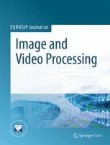Context-Based Defading of Archive Photographs
We present an algorithm for the enhancement of contrast in digitized archive photographic prints. It aims at producing an adaptive enhancement based on the local context of each pixel and is able to operate wi...
